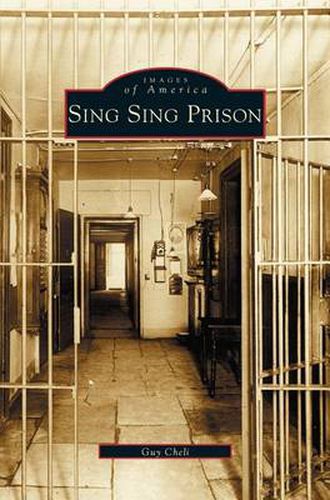Readings Newsletter
Become a Readings Member to make your shopping experience even easier.
Sign in or sign up for free!
You’re not far away from qualifying for FREE standard shipping within Australia
You’ve qualified for FREE standard shipping within Australia
The cart is loading…






This title is printed to order. This book may have been self-published. If so, we cannot guarantee the quality of the content. In the main most books will have gone through the editing process however some may not. We therefore suggest that you be aware of this before ordering this book. If in doubt check either the author or publisher’s details as we are unable to accept any returns unless they are faulty. Please contact us if you have any questions.
A popular backdrop for numerous movies, Sing Sing, or the Big House, has been a site of both controversy and reform. The history of Sing Sing dates back to 1825, when warden Elam Lynds brought one hundred inmates to begin construction of the prison up the river on the banks of the Hudson. The marble quarry that supplied the building material for the prison was located in an area that was once home to the Sint Sink, a Native American tribe whose name means stone upon stone. Prison life was dominated by hard labor during the early years. Convicts in striped suits and shackles built the prison with their own hands. With the arrival of warden Lewis Lawes in 1920, Sing Sing became the most progressive prison of its kind. During this time, the New York Yankees traveled up to Sing Sing to play the prison’s home baseball team; the prison grounds were landscaped with shrubbery and flower gardens; and the compound grew to include a chapel, mess hall, barbershop, library, and gymnasium. The electric chair was first introduced at Sing Sing in 1891. Julius and Ethel Rosenberg, the first civilians to be found guilty of espionage, were put to death there in 1953. Sing Sing Prison contains rare photographs from the prison archives, the Ossining Historical Society, and a private collection.
$9.00 standard shipping within Australia
FREE standard shipping within Australia for orders over $100.00
Express & International shipping calculated at checkout
This title is printed to order. This book may have been self-published. If so, we cannot guarantee the quality of the content. In the main most books will have gone through the editing process however some may not. We therefore suggest that you be aware of this before ordering this book. If in doubt check either the author or publisher’s details as we are unable to accept any returns unless they are faulty. Please contact us if you have any questions.
A popular backdrop for numerous movies, Sing Sing, or the Big House, has been a site of both controversy and reform. The history of Sing Sing dates back to 1825, when warden Elam Lynds brought one hundred inmates to begin construction of the prison up the river on the banks of the Hudson. The marble quarry that supplied the building material for the prison was located in an area that was once home to the Sint Sink, a Native American tribe whose name means stone upon stone. Prison life was dominated by hard labor during the early years. Convicts in striped suits and shackles built the prison with their own hands. With the arrival of warden Lewis Lawes in 1920, Sing Sing became the most progressive prison of its kind. During this time, the New York Yankees traveled up to Sing Sing to play the prison’s home baseball team; the prison grounds were landscaped with shrubbery and flower gardens; and the compound grew to include a chapel, mess hall, barbershop, library, and gymnasium. The electric chair was first introduced at Sing Sing in 1891. Julius and Ethel Rosenberg, the first civilians to be found guilty of espionage, were put to death there in 1953. Sing Sing Prison contains rare photographs from the prison archives, the Ossining Historical Society, and a private collection.